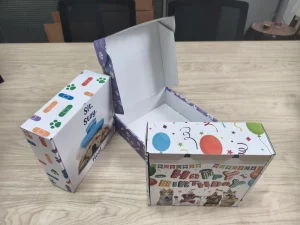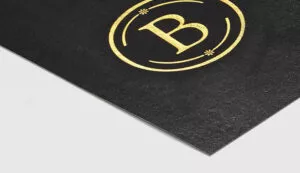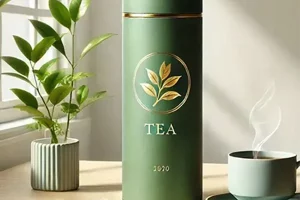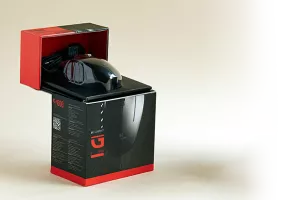The Rise of Sustainable Packaging: What the Market Holds for 2025
As we head towards 2025, the demand for sustainable packaging solutions has never been more critical. In a world increasingly focused on sustainability, both businesses and consumers are seeking ways to reduce their environmental impact and move towards greener alternatives. The sustainable packaging market is thriving as customers become more eco-conscious, pushing companies to adopt eco-friendly practices.
In this article, we will explore the size, trends, and future of the sustainable packaging market, touching on critical dimensions like retail packaging, biodegradable options, and consumer preferences. Whether you’re a business owner trying to adopt green packaging practices or a consumer interested in understanding the movement, this guide will offer some valuable insights.
Table of Contents
Why is Sustainable Packaging Important for the Future?
The environmental impact of traditional packaging materials, especially plastic, is significant. Most plastic packaging ends up in landfills and oceans, creating lasting damage to the environment and sea life. At the same time, single-use packaging is often non-recyclable, contributing to the growing problem of plastic waste.
As a response, the introduction of sustainable packaging is one of the best ways to mitigate the environmental damage:
- Reduce Waste: Sustainable packaging uses recycled materials or eco-friendly alternatives that are biodegradable or recyclable.
- Lower Carbon Footprint: The production of bio-based packaging decreases the carbon footprint compared to traditional plastic-based packaging.
- Customer Appeal: Consumer demand for sustainable products has been reinforced by a growing preference for eco-friendly packaging.
According to studies, 73% of global consumers are willing to pay more for sustainable products [1]. This shift in consumer preference shows that integrating sustainable practices into product packaging is key to connecting with today’s eco-conscious market.
What are the Key Trends in the Sustainable Packaging Market?
The sustainable packaging industry is full of innovations, trends, and emerging technologies that are set to revolutionize the way businesses package their products. Here are key packaging trends shaping the future of sustainable packaging:
1. Biodegradable Packaging
As concerns grow about the long-term effects of plastic, the packaging industry is moving towards biodegradable options. Materials like kraft paper, plant-based plastics, and compostable packaging are gaining increasing traction.
- Kraft Paper Bags have emerged as an alternative to plastic bags in retail stores, grocery chains, and even luxury brands. Check out our Kraft Paper Bags for examples of eco-friendly paper options.
2. Reusable and Recyclable Packaging
Consumers and brands are moving from single-use products to more sustainable, reusable packaging solutions. Brands that allow customers to reuse their packaging, either through refillable systems or by incentivizing product returns, are capturing this emerging market.
- Paper-based packaging and rigid packaging made from recycled materials are in high demand.
- Recyclable packaging promotes resource conservation and encourages consumers to make responsible choices post-purchase.
Products like our Corrugated Boxes offer an example of highly recyclable packaging solutions.
ALT
3. Minimalist Packaging Designs
Minimalist packaging focuses on using fewer materials while maintaining the product’s protection and branding. Reducing the weight and bulk of packaging materials not only contributes to sustainability but also cuts down the costs associated with shipping and storage.
Why Minimalism?
- Cost-effective
- Less waste
- Aesthetic appeal
With more companies cutting back on excess material, minimalist packaging continues to gain ground.
4. Smart Packaging
Smart packaging aka interactive and data-driven packaging materials will enhance supply chain visibility while minimizing environmental waste. For instance, using sensors embedded in solutions such as smart packaging helps minimize food spoilage by tracking freshness and conditions. This is especially relevant in the food packaging industry.
How Big Is the Sustainable Packaging Market?
The sustainable packaging market size is forecast to grow exponentially, driven by high demand in industries like food, beverages, and retail packaging.
- Global Sustainable Packaging Market Size: Expected to reach $441 Billion by 2028 with a CAGR (Compound Annual Growth Rate) exceeding 6% [2].
This trend indicates that companies would need to focus on sustainability to not only remain competitive but also to respond to shifting consumer demand for eco-friendly and green packaging products.
What Types of Sustainable Packaging Materials Are Emerging?
Different types of eco-friendly packaging solutions are being developed and adopted across industries. Let’s break down the types of sustainable packaging:
1. Biodegradable Plastics
Bioplastics are made from renewable plant sources like corn starch or sugarcane. They act like traditional plastic but are biodegradable over time.
2. Paper and Cardboard
Classic paper-based packaging, such as paper bags and cardboard boxes, remains one of the more eco-friendly materials. These materials are renewable, recyclable, and often produced from recycled paper.
For example, Cardboard Boxes have been widely used by several brands as part of their sustainable packaging solutions.
ALT
3. Compostable Packaging
Products that break down in organic conditions, such as compostable packaging, provide businesses with one of the most environmentally friendly packaging options. This packaging decomposes fully with minimal environmental impact, reducing packaging waste in landfills.
How is Retail Packaging Evolving to Be More Sustainable?
Retail businesses are among the leading sectors adopting sustainable retail packaging practices. Whether in grocery packaging, fashion retail, or cosmetics packaging, eco-conscious packaging is steadily replacing plastic-based solutions:
Why is Retail Leaning Towards Sustainability?
- Consumer Demand: Consumer demand for sustainable packaging drives retailers to switch to eco-friendly options or risk losing loyal customers.
- Cost Savings: Durable, reusable packaging materials create long-term savings through reduced raw material costs and fewer disposables.
Retailers globally are launching sustainability initiatives, like eliminating single-use packaging and introducing reusable packaging programs. Retailers are also adopting flexible packaging that’s light, easy to ship, and recyclable, reducing both costs and the environmental impact.
How Does Consumer Demand Influence Sustainable Packaging?
Consumer demand is now the main driving force for companies to switch to sustainable packaging. Studies show that more than 80% of consumers look for eco-friendly products and packaging when making purchase decisions
How does Sustainable Packaging Affect Purchase Decisions?
- Brand Perception: Today’s consumers associate sustainability with brand ethics. Companies that use sustainable packaging materials are perceived as more environmentally responsible and appeal to eco-conscious buyers.
- Loyalty: When brands offer green packaging, they foster stronger customer loyalty, often leading to repeat business.
- Prices: Research shows that consumers are ready to pay a premium for sustainable products that minimize environmental harm.
Many companies are already incorporating sustainable practices into their products like Branded Headphone Boxes, appealing to the growing market keen on responsible consumption.
What Benefits Do Sustainable Packaging Solutions Offer?
Adopting sustainable packaging solutions offers several advantages to businesses and consumers alike. Here’s why it’s one of the fastest-growing trends in the packaging market:
- Environmental Protection: Reduces harmful plastic waste and minimizes damage to ecosystems.
- Enhanced Brand Loyalty: Businesses that prioritize sustainability win greater consumer trust and loyalty.
- Cost Efficiency: Many sustainable materials like recycled cardboard or kraft paper are cost-effective, and designs can be optimized to use less material.
- Waste Reduction: Recyclable packaging materials help close the loop by ensuring packaging doesn’t contribute to the growing landfill problem.
Conclusion: Sustainable Packaging is the Future
There is no denying that sustainability has become more than just a selling point—it’s now a necessity. The sustainable packaging market is rapidly growing, driven by both consumer demand for sustainable products and ambitious sustainability goals set by businesses and governments.
As businesses work towards a circular economy, where materials are reused and waste is minimized, recyclable packaging, biodegradable materials, and other green solutions will dominate the packaging market.
Key Takeaways:
- Sustainability is now integral to the packaging industry, with a particular focus on reducing plastic waste and increasing the use of recycled materials.
- The global sustainable packaging market is growing rapidly, offering new opportunities for businesses that prioritize eco-friendly packaging solutions.
- Consumer demand is pushing companies to innovate with biodegradable, reusable, and compostable packaging, making them crucial to product purchase decisions.
Curious to learn more about eco-friendly packaging? Explore sustainable paper packaging options such as Kraft Boxes and find out how your business can go green today!

Sources:
[1] Global Consumer Preference Report for Sustainable Packaging
[2] Global Packaging Market Size and Forecast








